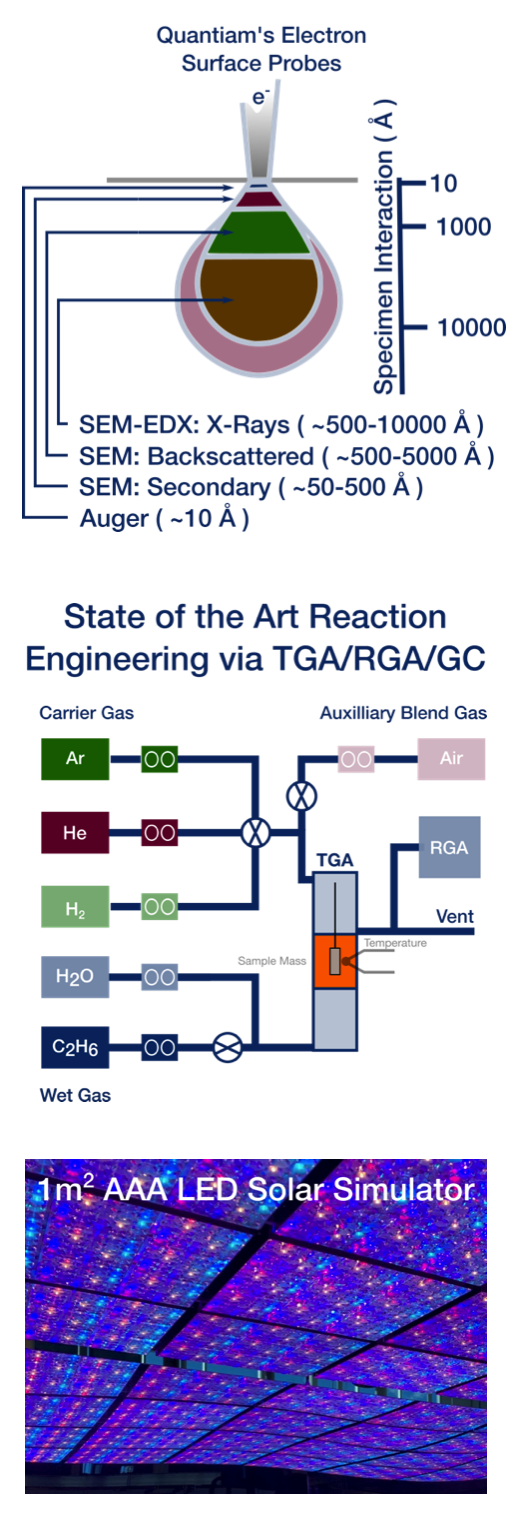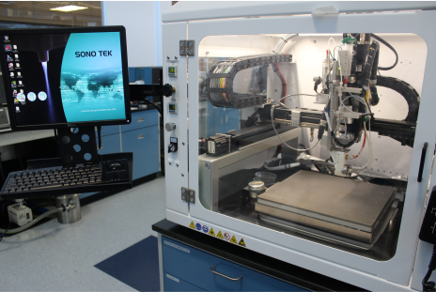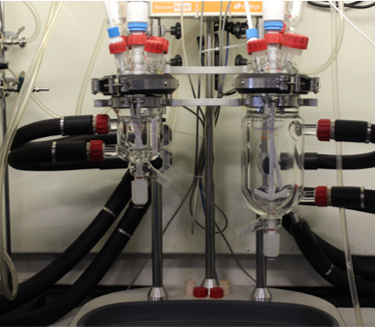
Quantiam’s 34,000-ft2 R&D and trial manufacturing facility in Edmonton houses our extensive in-house materials characterization and development capabilities. Contact us today to find out how we can solve your materials and process-related pain points.


Extensive high temperature testing up to 1500°C under various atmospheres including:
Catalyst performance testing/screening:


| Technique Characteristics |
JEOL JSM-7001F FE-SEM/EDS
|
JEOL JSM-6010LV SEM/EDS
|
Perkin Elmers PHI-5600 small spot XPS
|
Perkin Elmers PHI-600 SAM/SIMS
|
|
|---|---|---|---|---|---|
| Field Emission Scanning Electron Microscopy w/ Energy Dispersive Spectroscopy | Scanning Electron Microscopy w/ Energy Dispersive Spectroscopy | X-ray Photoelectron Spectroscopy (XPS) | Auger Electron Spectroscopy/Scanning Auger Multiprobe (AES-SAM) | Secondary Ion Mass Spectrometry (SIMS) | |
| Probe | electrons | electrons | x-ray | electrons | ions |
| Detected Particles | electrons and photons | electrons and photons | electrons | electrons | +ve or -ve ions |
| Range | B and higher | B and higher | Li and higher | Li and higher | 1 - 511 amu |
| Sampling Depth | 0.5 – 5 μm | 0.5 – 5 μm | 10 - 50 Å | 4 - 30 Å | 20 - 50 Å |
| Detection Limit* | 0.5 to 2.0 at% | 0.5 to 2.0 at% | 0.1 to 1.0 at% | 0.1 to 1.0 at% | ppm to ppb |
| Depth Profiling (Speed and Type) | N/A | N/A | fast, argon ions | fast, argon ions | fast, argon/oxygen |
| Information | elemental | elemental | elemental, chemical | elemental, some chemical | elemental, some structural |
| Quantitative | semi | semi | semi | semi | not usually |
| Probe Spatial Resolution | 1.2 nm | 4.0 nm | 75 μm | ~35 nm | 200 μm to 1 mm |
| Advantages |
excellent spatial resolution
elemental mapping
|
excellent spatial resolution
elemental mapping
|
few limitations on sample type
chemical state information
low damage to sample
|
good spatial resolution
elemental mapping
analyzing conductors and semiconductors
|
excellent sensitivity
isotope and hydrogen detection
|
* Detection limit varies by element